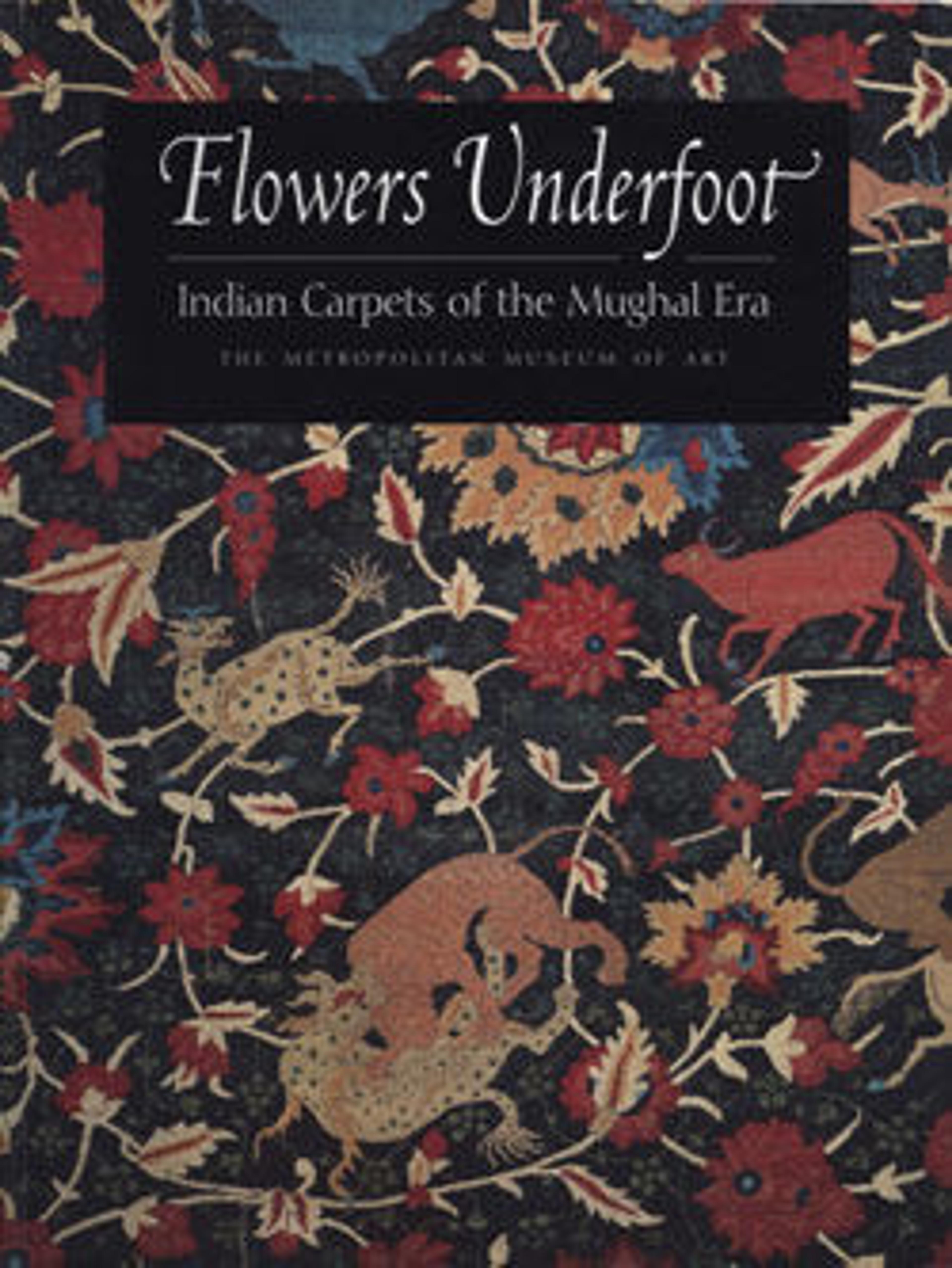Fragment of a Floorspread
On this fragment from what was once a magnificent floorspread, later cut and hemmed for a different purpose, stately rows of poppies line the central field. Like several Mughal-period pile carpets, the main motif changes direction in some areas; here, alternate poppy plants appear upside down in the top row. The spread was made through the laborious dyeing process known as kalamkari; remarkably, the usually fugitive green is very well preserved. In this process, green was achieved by painting a yellow dye over areas already tinted with indigo, but the yellow often faded, leaving only the undercoat of blue on historic kalamkaris.
Artwork Details
- Title: Fragment of a Floorspread
- Date: late 17th century
- Geography: Attributed to India
- Medium: Cotton; plain weave, mordant-painted and dyed, resist-dyed
- Dimensions: L. 66 3/4 in. (169.5 cm)
W. 142 in. (360.7 cm) - Classification: Textiles-Rugs
- Credit Line: The Alice and Nasli Heeramaneck Collection, Gift of Alice Heeramaneck, 1982
- Object Number: 1982.239a
- Curatorial Department: Islamic Art
More Artwork
Research Resources
The Met provides unparalleled resources for research and welcomes an international community of students and scholars. The Met's Open Access API is where creators and researchers can connect to the The Met collection. Open Access data and public domain images are available for unrestricted commercial and noncommercial use without permission or fee.
To request images under copyright and other restrictions, please use this Image Request form.
Feedback
We continue to research and examine historical and cultural context for objects in The Met collection. If you have comments or questions about this object record, please contact us using the form below. The Museum looks forward to receiving your comments.
